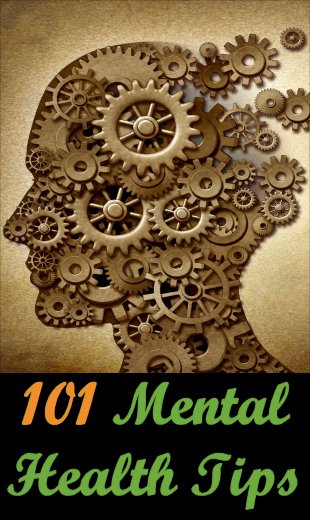6 No-No’s For When You’re Having A Panic Attack
Panic attacks can be deeply painful and scary experiences. It can sometimes feel as though your body is working against you when you have anxiety.
Common reactions include, “why is this happening to me again?” or “this isn’t fair”. These may be common thoughts, but they are not helpful.
There are ways to reduce anxiety that we can talk a lot about. There are also ways that we can exacerbate our anxiety and panic attacks.
We obviously want to avoid this.
Keep reading to learn about the things you want to avoid when panic strikes. If you feel yourself doing this, it is okay, we just want to gently challenge ourselves to make better choices during a panic attack.
Feeling Like You Have To Push Through
Forcing yourself to push through and keep doing whatever it is you were doing when the panic attack hits is not helpful.
It would not be fair for whatever it is you were doing before the panic because you can no longer give your full attention to it.
Also, your anxiety is most likely to reduce faster if you focus on it for a second and intentionally work through it, rather than try to avoid acknowledging its existence.
What is more helpful would be to step away from the task and appropriately work through the panic attack with whatever interventions work best for you.
Then, come back to the task when you are back at baseline. For example, step away and focus on your deep breathing or use a grounding technique. Go for a walk or play with your dog.
Whatever helps you to calm down is most appropriate to do at this time, rather than trying to continue what you were doing before.
Getting Angry With Yourself Or Having Judgmental Thoughts
As I mentioned above, it is really normal to have judgmental or even angry thoughts towards yourself when the panic attack hits. I mentioned commons ones above: “why, again?” or “this isn’t fair”.
Spending a lot of time on these thoughts can perpetuate the experience though as we do not want to do that. Obsessing over the anxiety or panic will just invite it to stay around longer than it intended to.
What is more helpful is to allow the thoughts to come and go naturally as they are intended to – without spending a lot of time obsessing over them.
Much like watching a leaf float down a stream, we want to watch our thoughts come and go naturally. This will prompt the anxiety to move on naturally as well, without inviting it to stick around.
This is not an easy practice. It takes time and experience and it can feel challenging at first because it is a normal symptom to obsess over thoughts.
Being intentional about practising allowing thoughts to come and go will be helpful.
Being Around People Who Do Not Support You
Life is so short. We should all be surrounding ourselves with people who love and support us, especially in difficult times.
If you notice that the people you are spending time with are not supporters or even make the process more difficult, it may be helpful to consider whether or not they serve you.
When you ask yourself the question, “does this person serve me and do I serve them in a helpful way?” be sure to listen to the answer.
If your answer is that having them around doesn’t help you, it may be worth considering moving on. Not all relationships are intended to last forever. Many do, but not all.
Before you just cut people loose, you may want to engage them in conversation about how they can be more helpful to you during panic and anxiety.
Maybe they simply do not know how to support you best and they think they are being helpful. If they make healthy, effective changes, then they may be good people to have around.
But if they simply ignore what you need, it may be worth considering if it is time to move on.
Just a thought.
Not Learning And Practising What You Need
You should be learning about yourself during this process.
If you realize there are certain things you need to feel better, then you should be practising them. If you need to do more self-care, then do so. If you need to exercise more to manage your mental health, then do so. If you know that there is something that you can do to explicitly help during your panic attack, then you should do it regardless of what other people may think.
For example, many people need to take a nap when they’re having a lot of panic. They like to stay in their bedroom for an hour or so by themselves to come back to baseline.
If they do not create intentional space to do so, then their panic will seem to last longer.
Ignoring what you need during a panic attack will not help you overcome it. If you need a Starbucks or need to talk to someone, do it. If you need to excuse yourself during a meeting to take a brief walk, then you should do it.
Taking care of yourself should always come first. Nobody else will take care of you if you will not do so first.
Ignoring Your Breathing
If you are having a panic attack, the likelihood that your breathing becomes rapid and shallow is high. This is a common symptom of panic.
Do not ignore your breathing. You should intentionally focus on returning your breathing to baseline by engaging in deep breathing techniques. You could take five deep breaths in through your nose, hold it for five seconds, and breathe out through your mouth. This can begin to return the breathing to normal.
You could also use a guiding breathing or guided meditation app such as Headspace or Calm. These will walk you through a breathing technique to return to normal.
Allowing your breathing to remain shallow and rapid will not help to reduce the anxiety.
Do Not Isolate For Too Long
Isolating is not your friend, although it may feel as though it is.
The above example of taking a nap is helpful, but try not to isolate for longer than an hour. Then, try to return back to the household and participate in your community as you begin to feel better.
Long-term isolation can perpetuate the panic and reduce our functioning greatly.
If you struggle with communicating your experiences to friends and loved ones, I will challenge you to talk with them a bit about your panic or anxiety and ask that they check in on you and see what you need.
Having clear systems of support to reduce the isolation will be beneficial.
Remember that none of us can do this alone. We are wired to want to be connected and support others, so we have to be willing to ourselves receive the support as well.
People love you and want to help – so allow them to do so.
Conclusion
I recommend becoming familiar with these six no-no’s, both in terms of the signs as well as the remedial actions.
Additional Resources
These are suggestions for those who wish to delve deeper into any of the above:







